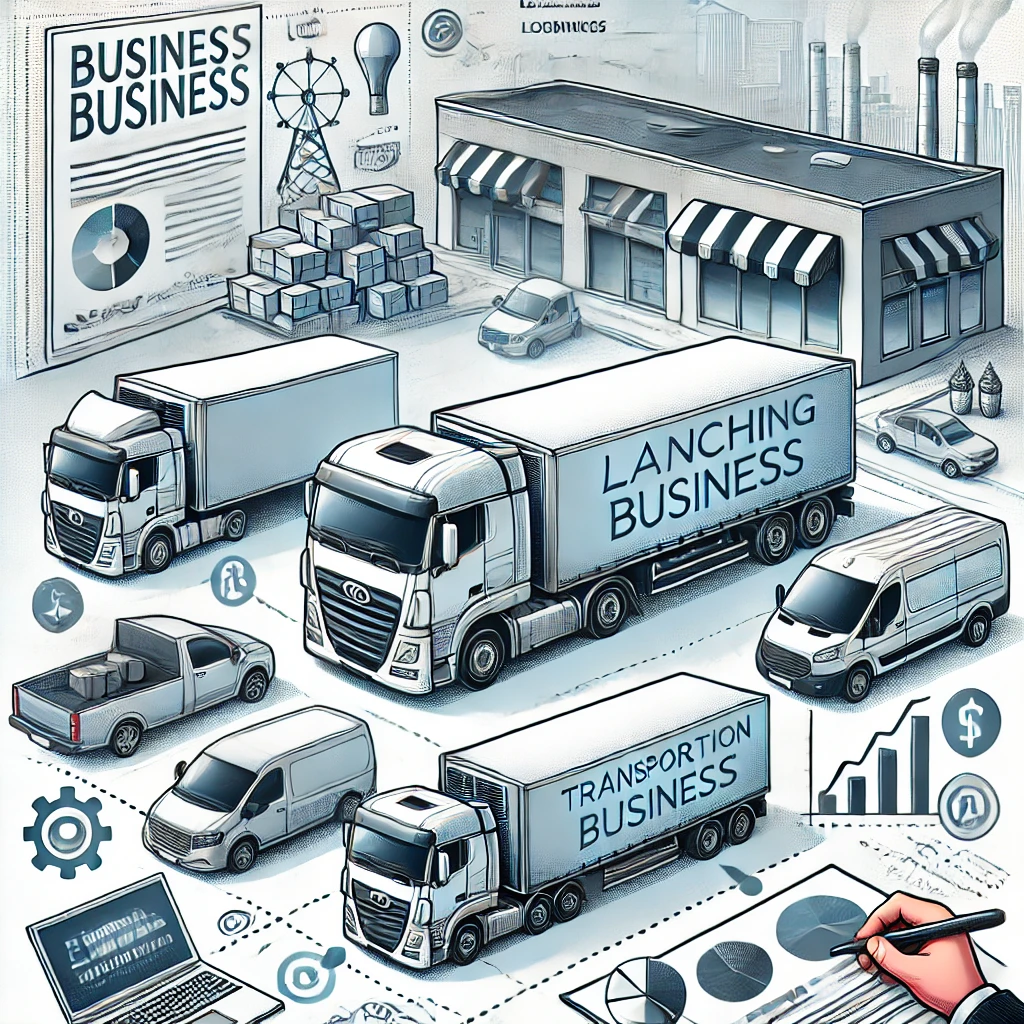How to Start a Transportation Business: A Comprehensive Guide

1. Define Your Niche
Before diving into the logistics of starting your business, it’s crucial to decide on your specific niche within the transportation industry:
- Freight transportation (local, long-haul, or international)
- Passenger transportation (taxi service, shuttle service, or charter bus)
- Specialized transportation (hazardous materials, refrigerated goods, or oversized loads)
- Last-mile delivery services
- Logistics and supply chain management
2. Develop a Business Plan
A solid business plan is the foundation of any successful venture. Your plan should include:
- Executive summary
- Company description and structure
- Market analysis and strategy
- Service offerings
- Marketing and sales plan
- Financial projections (startup costs, operating expenses, revenue forecasts)
- Funding requirements
3. Legal and Administrative Steps
Ensure your business is properly registered and compliant with all regulations:
- Choose a business structure (LLC, corporation, partnership)
- Register your business name
- Obtain an Employer Identification Number (EIN) from the IRS
- Apply for necessary licenses and permits:
- Commercial Driver’s License (CDL) for truck drivers
- USDOT Number and MC Number for interstate operations
- State-specific transportation licenses
- International Registration Plan (IRP) for multi-state operations
- International Fuel Tax Agreement (IFTA) for interstate fuel tax reporting
4. Secure Financing
Calculate your startup costs and explore financing options:
- Personal savings
- Business loans from banks or credit unions
- SBA loans
- Equipment financing or leasing
- Investors or partners

5. Acquire Vehicles and Equipment
Choose the right vehicles for your business:
- Consider new vs. used vehicles
- Decide between purchasing and leasing
- Ensure compliance with safety and emissions standards
- Invest in necessary equipment (GPS systems, refrigeration units, etc.)
6. Obtain Insurance
Protect your business with appropriate insurance coverage:
- Commercial auto insurance
- General liability insurance
- Cargo insurance
- Workers’ compensation insurance (if hiring employees)
- Umbrella insurance for additional liability protection
7. Establish Your Operations
Set up the operational aspects of your business:
- Secure a business location (office space, parking for vehicles)
- Implement fleet management and routing software
- Set up accounting and invoicing systems
- Develop safety protocols and driver handbooks
- Create maintenance schedules for vehicles
8. Hire and Train Staff
If expanding beyond an owner-operator model:
- Recruit qualified drivers and support staff
- Conduct background checks and verify licenses
- Provide comprehensive training on safety procedures and company policies
- Implement a competitive compensation and benefits package

9. Develop a Marketing Strategy
Promote your business to attract clients:
- Create a professional website
- Utilize social media platforms
- Network with potential clients and industry partners
- Consider digital advertising and SEO strategies
- Attend industry trade shows and events
10. Ensure Compliance and Safety
Stay on top of regulatory requirements:
- Implement a system for tracking Hours of Service (HOS)
- Conduct regular vehicle inspections and maintenance
- Stay updated on DOT regulations and industry standards
- Implement drug and alcohol testing programs for drivers
11. Manage Finances Carefully
Maintain financial health:
- Keep accurate records of income and expenses
- Work with an accountant familiar with the transportation industry
- Monitor cash flow closely
- Set aside funds for taxes and unexpected expenses

12. Focus on Customer Service
Build a reputation for excellence:
- Prioritize punctuality and reliability
- Implement a system for handling customer feedback and complaints
- Offer transparent pricing and billing
- Provide real-time tracking and updates for clients
13. Plan for Growth
Think ahead to expand your business:
- Monitor market trends and adapt your services accordingly
- Consider expanding your fleet or service area
- Explore partnerships or acquisition opportunities
- Diversify your service offerings
14. Leverage Technology
Stay competitive with modern solutions:
- Implement telematics for fleet management
- Use route optimization software
- Offer a user-friendly mobile app for bookings and tracking
- Utilize data analytics for business insights

Challenges and Tips for Success
- Challenge: High operational costs Tip: Implement fuel-efficient practices and negotiate bulk purchasing deals
- Challenge: Driver retention Tip: Offer competitive pay, benefits, and a positive work environment
- Challenge: Intense competition Tip: Focus on exceptional service and find a unique selling proposition
- Challenge: Regulatory compliance Tip: Stay informed and consider hiring a compliance officer
- Challenge: Cash flow management Tip: Offer incentives for prompt payment and consider invoice factoring
Conclusion
Starting a transportation business requires careful planning, significant investment, and ongoing dedication. However, with the right approach and a commitment to quality service, it can be a rewarding and profitable venture. Stay adaptable, prioritize safety and customer satisfaction, and continuously seek ways to improve and expand your services. With persistence and smart management, your transportation business can thrive in this essential and dynamic industry.
